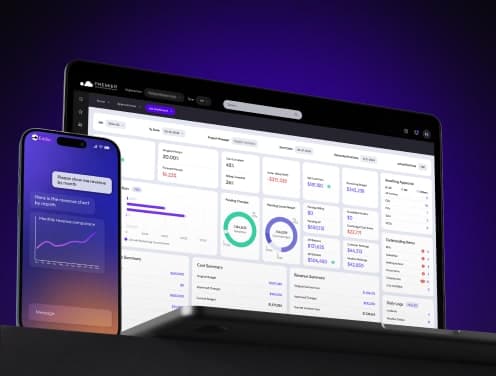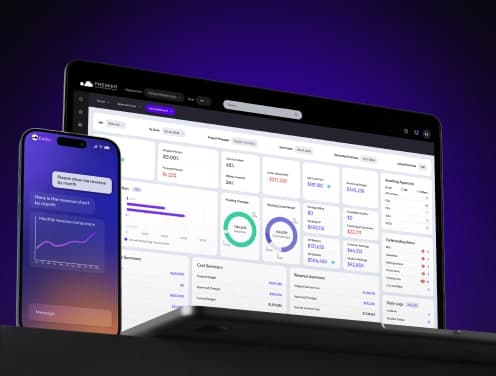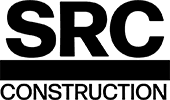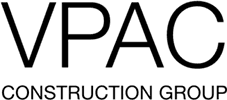
Principles of Lean Construction: A Guide for Contractors and Managers
Lean construction principles are changing how contractors manage their projects. A Dodge Construction Network report reveals impressive numbers - 84% of contractors who use lean methods achieve better quality construction, and 80% have happier customers. The benefits extend further, with 77% of contractors reporting better productivity and safety.
Construction companies everywhere now embrace these principles to reduce waste, cut costs, and streamline processes. Lean principles in construction focus on delivering maximum value to customers while eliminating unnecessary steps and resources. The approach views construction as a seamless flow of value-adding processes rather than isolated activities.
These principles stem from Toyota's manufacturing approach after World War II, adapted specifically to address construction challenges. The Environmental Protection Agency defines this business model as "eliminating non-value-added activities (waste) while delivering quality products on time at least cost with greater efficiency". The methodology targets eight main types of waste that affect construction projects: defects, overproduction, waiting, not utilizing talent, transport, inventory, motion, and over-processing.
This piece will show you six essential principles that power lean construction, practical applications for your projects, and tools that help implement this approach effectively.
What is Lean Construction?
Lean construction brings a fundamental change to project delivery. Teams work together to create maximum value while cutting down waste throughout the building process. This approach differs from old methods. It gives teams a structure to learn and find better ways to work together. The result? Superior outcomes within realistic timeframes.
Why it matters in modern construction
Construction companies face ongoing challenges. Projects go over budget. Deadlines slip by. Resources get wasted. Lean construction tackles these problems head-on.
Lean practices cut waste in all forms, materials, time, labor, and extra steps. Companies boost productivity by removing tasks that don't add value.
Projects using lean methods finish on time three times more often and come in under budget twice as often. These aren't small gains. They make a real difference to the bottom line.
More benefits include:
- Better quality and safety on jobsites
- Higher client satisfaction through better involvement
- Lower environmental impact through smarter resource use
- Ongoing improvements that carry lessons between projects
How it differs from traditional methods
Lean and traditional construction show clear differences in several ways:
Traditional construction works in separate silos with broken processes. Teams work alone. This leads to poor communication and waste. Each phase tries to be efficient on its own, not as part of the whole project.
Lean construction uses collaborative planning with tools like the Last Planner System and pull planning. Everyone joins in planning, from designers to subcontractors. This creates smooth workflows.
Traditional project management pushes decisions down from the top. Schedules stay rigid. Communication follows strict paths. Budget control reacts to problems after they happen.
Lean construction uses adaptive, flexible timelines and always looks to improve. Visual tools help everyone see current information. Workers help solve problems and make decisions. This builds a learning culture.
Lean construction looks at the whole value stream instead of single tasks. This marks a basic change in how teams plan and finish projects.
Principle 1: Define Value from the Customer’s Perspective
The first principle of lean construction builds on a simple but powerful idea: the customer defines what value means. Traditional construction companies focus on their internal processes and optimization, often missing the most important viewpoint, the client's. This change in thinking serves as the life-blood of lean principles in construction.
Understanding what the client truly needs
Customer value in construction reaches way beyond the reach of simple project specifications. You need to dig deeper to find what matters to your clients, which is often different from what they tell you at first. Research shows clients often can't state their true requirements, especially for complex construction projects.
Learning about genuine client needs starts with asking better questions. Rather than "What do you want built?" ask "What problems are you trying to solve with this building?" This change opens talks about functionality, not just features. A client asking for more office space might actually need better shared areas or improved workflow, solutions that might not need as much new construction.
Active listening makes all the difference in this process of finding client needs. Construction managers who excel at understanding clients spend twice as much time listening as talking during their first project meetings. They ask follow-up questions and repeat requirements to check their understanding.
It also helps when contractors map out client priorities. Not all requirements matter equally, some are vital while others are just nice to have. By noting these differences early, you create a clear ranking of decisions that guides the project team. This helps avoid getting pricey changes when trade-offs pop up later.
The team should analyze how people will use the completed structure day-to-day. This reveals insights clients might miss. Who will use the space? How will they move through it? What activities must it support? These questions bring out functional requirements that standard specifications often overlook.
Lining up project goals with stakeholder expectations
After understanding what clients truly value, you need to get all project stakeholders on board with these priorities. Construction projects bring together many parties, architects, engineers, subcontractors, suppliers, regulatory agencies, each with their own goals and viewpoints.
Start by creating a shared definition of success. Everyone must understand value from the customer's viewpoint, shown as specific, measurable outcomes. This common ground stops teams from chasing their own goals instead of client priorities.
Regular value reviews throughout the project lifecycle come next. These structured checks help see if current decisions and activities directly add to customer-defined value. Work that doesn't add value becomes a target to eliminate.
Here's a practical approach: Set up a visual project dashboard that connects all activities to specific customer-valued outcomes. This clarity helps team members see how their work adds to overall success. It also shows which processes don't add customer value, making them prime targets to improve or remove.
The team should involve clients in regular walkthroughs and progress reviews. Their feedback helps keep the project in line with their changing needs. These meetings also let you teach clients about trade-offs and limits, which helps manage expectations throughout the project.
Lean construction principles begin and end with customer value. Understanding what clients really need and focusing all project activities on delivering that value helps teams eliminate waste, optimize work, and achieve better customer satisfaction. Every decision, from picking materials to scheduling, must answer one question: "Does this add value from the customer's viewpoint?"
Principle 2: Map the Value Stream
Customer value defines your priorities. The next crucial step in lean construction teaches you how that value takes shape. A value stream map visualizes your entire construction process and shows exactly where value grows or diminishes.
What is a value stream in construction?
A value stream covers "the sequence of activities required to design, produce and deliver a good or service to a customer". This represents every step from the original design through material procurement to final project delivery in construction.
Picture a value stream as your project's complete experience. Unlike traditional construction scheduling, value stream mapping concentrates on two parallel flows that drive projects forward:
- Material flow: The physical movement of materials, equipment, and labor across your jobsite
- Information flow: The exchange of plans, specifications, RFIs, change orders, and decisions
These flows must sync perfectly to deliver value. To cite an instance, delayed drawing approvals (information flow problem) leave crews and materials idle (material flow disruption).
Value stream mapping reveals your processes' true efficiency. Research indicates that typical construction processes only add value 18.6% of the total project time. The other 81.4% represents non-value-added time, pure waste.
This explains construction's lagging productivity compared to other industries. These inefficiencies stay hidden without proper value stream mapping.
Using value stream mapping to identify inefficiencies
Value Stream Mapping (VSM) provides construction teams a visual "storyboard" of work progression from start to finish. This tool surpasses traditional scheduling by revealing:
- Every handoff between trades and departments
- Decision points that create bottlenecks
- Information gaps causing rework
- Activities that don't add customer value
VSM follows four essential steps:
- Map the current state: Document your current process with real jobsite data. Teams must walk the site, time activities, and observe workflow firsthand.
- Identify waste: Your map helps spot eight common construction waste types:
- Defects requiring rework
- Overproduction (producing more than needed)
- Waiting time between activities
- Underutilized talent
- Transportation of materials
- Inventory sitting idle
- Motion (unnecessary movement)
- Extra processing beyond customer needs
- Design the future state: Create an ideal process map that shows improvements. This becomes your process improvement target.
- Implement changes: Execute improvements by targeting major waste sources first.
Results can transform projects dramatically. One structural steel erection project discovered through VSM analysis that daily wastes added up to 17 lost days in a 45-day schedule. The team recovered almost 38% of project time by eliminating these inefficiencies.
Teams that adopt VSM see benefits beyond faster schedules. Communication improves because everyone sees the complete process visually. Problems surface earlier when fixes cost less. The mapping process promotes team collaboration since everyone contributes their insights.
VSM's strength lies in its straightforward approach. Though it started in manufacturing, it fits construction's complex environment perfectly. You can start mapping your value stream with just pen and paper (or digital tools) today and discover hidden inefficiencies tomorrow.
Principle 3: Eliminate Waste
"The most dangerous kind of waste is the waste we do not recognize.", Shigeo Shingo, Industrial Engineer, Co-creator of Toyota Production System
Waste elimination is central to lean construction principles. Studies show that more than 50% of time in U.S. construction gets wasted on activities that add no value to customers. This approach helps teams spot and remove anything that uses resources without adding to the final product.
The 8 types of waste in construction
Construction waste is more than just leftover materials, it's any process or resource that doesn't create value. The industry has eight main types of waste (also known as "DOWNTIME"):
- Defects: Wrong work that needs fixes, replacements, or do-overs. This covers damaged materials and punch list items.
- Overproduction: Starting too early, buying extra materials, or making more than needed.
- Waiting: Teams standing idle while waiting for materials, equipment, or answers about RFIs and submittals.
- Non-utilized talent: Not using people's skills, creativity, or knowledge well, wasting your best resource.
- Transportation: Moving materials or equipment needlessly between jobsites, yards, or work areas.
- Inventory: Too many materials on-site create handling problems and tie up money.
- Motion: Workers taking extra steps, looking for tools, or walking too far because of poor site layout.
- Extra Processing: Unnecessary steps in production or paperwork, like getting multiple signatures, duplicate reports, and forwarding unnecessary emails.
Examples of waste in real projects
Waste shows up in many ways on construction sites. A drywall contractor once loaded an entire floor with studs before other trades finished their work. This created a chain reaction: the mechanical contractor couldn't install ductwork (waiting), teams moved stud bundles around (transportation and motion), materials got damaged (defects), and skilled workers spent time moving materials instead of installing them (non-utilized talent).
The Denver Federal Center project shows how physical waste adds up. A plumbing replacement project almost sent 500 porcelain toilets to landfills. The team recycled these fixtures and debris from eight building demolitions. This saved $37,125 and kept 319 semi-truckloads of material out of landfills.
Demolition waste makes up over 90% of total construction and demolition debris. Traditional methods don't deal very well with recovery options. Renovation projects can save doors, windows, appliances, and fixtures instead of throwing them away. This substantially cuts down waste.
How to reduce or remove them
Teams need a structured plan to prevent and recover from waste:
Implement lean planning tools: Last Planner® and pull planning prevent schedule conflicts that lead to waiting. Daily huddles help teams fix problems right away instead of waiting for weekly meetings.
Adopt prefabrication: Off-site manufacturing in controlled conditions creates less waste than building on-site. Custom-sized materials reduce cutoffs and scraps.
Establish on-site recycling: Different waste types need separate dumpsters to help recycling. Crushing concrete and masonry debris on-site creates usable aggregate for new construction.
Reuse existing materials: Crushed concrete from old buildings works well as aggregate for new foundations or road base. One industrial park used nearby building materials as aggregate, which saved time and money.
Track and measure waste: You can't manage what you don't measure. Waste tracking systems help spot trends and track progress toward reduction goals.
Apply 5S workplace organization: Clean, organized work areas cut down on wasted motion and boost productivity.
Train workers on waste identification: Teams need regular training to spot and eliminate waste. This promotes a culture where everyone owns waste reduction.
Waste elimination pays off big time. Lean construction projects finish on time three times more often and come in under budget twice as often. One structural steel project cut out simple daily wastes and saved 17 days from a 45-day schedule, almost 38% of the timeline.
Lean construction sees waste elimination as an ongoing journey, not a quick fix. Teams that keep finding and removing activities that don't add value see big improvements in productivity, quality, and profits.
Principle 4: Create Continuous Workflow
Creating continuous workflow is the fourth principle of lean construction and could be the toughest to put into practice. Traditional construction typically runs in disconnected segments. Teams work in isolation which creates starts and stops throughout the project lifecycle.
Why flow matters in construction
Smooth workflow in construction will give a direct boost to your project's success. A continuous construction workflow helps you avoid the costly stop-start pattern that ruins many projects. Research shows that typical construction processes only add value 18.6% of total project time. The other 81.4% goes to non-value activities, mostly waiting between tasks.
Bad workflow sends ripples through your entire project. Teams end up waiting, information gets lost, materials show up at the wrong time, and costs start climbing. One structural steel project lost 17 days from simple daily flow disruptions in a 45-day schedule.
Steady workflow does more than keep schedules on track. It affects:
- Team morale and productivity
- Material and equipment utilization
- Cash flow and financial planning
- Client satisfaction and trust
How to maintain steady progress
Your backlog is the total value of work under contract but not yet completed. A well-managed backlog will give a steady stream of income and helps predict resource needs. Construction experts agree that "getting your backlog right couldn't be much more important" to grow your construction firm.
Last Planner System (LPS) and other collaborative planning techniques make shared work easier by promoting constant coordination. These methods help spot constraints before they disrupt progress. Teams can solve problems right away in daily huddles instead of waiting for weekly meetings.
The project needs organization that keeps work moving. The next crew should be ready as soon as one crew finishes. This needs careful planning and coordination. Framing crews should be set to start right after foundation work wraps up.
Clear, standard processes help repeating tasks run smoothly. Team members know their role at each step, which cuts down confusion and variation. Standard processes lead to faster operations and better quality work.
Avoiding bottlenecks and delays
Work slows down or stops when volume exceeds capacity, creating bottlenecks. These problems can lead to missed deadlines, budget overruns, and damaged stakeholder relationships.
Common construction bottlenecks include:
- Communication gaps: Backlog emails, unprocessed change orders, and RFIs pile up when teams don't share information well.
- Resource limitations: Work stops due to skill shortages, uneven workloads, and equipment shortages.
- Space constraints: Limited jobsite space creates logistical and safety challenges that slow productivity.
- Material delays: Supply chain problems can stop projects cold. Smart teams order materials early and track orders openly.
- Administrative bottlenecks: Old-school documentation and slow payments strain cash flow and block progress.
Digital tools that connect field and office teams through one central system can solve these problems. Live data sharing lets everyone work from the same schedule and prevents confusion and delays.
Smart project managers spot potential bottlenecks early by checking workflow patterns and resource use. They fix issues by shifting tasks around or adding resources where needed. Simple changes like better jobsite layouts can substantially improve flow.
Bottlenecks show up clearly as they happen. Good systems help catch and fix them before they cause major delays. Teams need to stay flexible and ready to adapt as conditions change. Quick problem-solving stops small issues from growing into big headaches.
Principle 5: Use Pull Planning and Scheduling
Pull planning revolutionizes traditional construction scheduling. About 15% of contractors have tried this technique, which grows faster in popularity across the construction industry. This approach completely changes how projects progress from concept to completion.
Push vs. pull systems
Traditional push planning creates schedules from the start date and moves forward based on preset deadlines. The system runs whatever happens on the ground and lacks flexibility. Schedulers create timelines and force tasks onto teams without their input.
Pull planning works differently by starting at the end goal and moving backward to identify the work to be done for key milestones. The system redirects resources based on real-time production needs instead of forecasted schedules. Teams request, or "pull", work only as downstream activities need it.
The results speak for themselves. Studies show pull approaches improve productivity, reduce idle time, lower crew turnover, and minimize task interruptions. Projects using pull planning see up to 30% fewer delays and 25% less rework compared to traditional methods.
How pull planning works on-site
Pull planning sessions gather all stakeholders in one room. The team picks a milestone, such as project completion, and works backward to map out each required step.
Teams use color-coded sticky notes on a wall-mounted board. Stakeholders write their activities on notes and include duration and handoff requirements. Everyone works from right to left, starting with the milestone and placing notes that show their commitments.
These meetings turn scheduling into a team effort. Construction managers put it best: "Pull planning keeps project managers from asking 'What happens next?' Instead, they ask, 'What needs to happen before the next activity can start?'"
Many teams use the Last Planner System (LPS) with pull planning. This workflow method builds accountability, trade representatives commit to specific outputs and solve problems together.
Role of subcontractors in scheduling
Subcontractors serve a vital role in pull planning's success. Their expertise offers valuable insights into task sequencing, durations, and dependencies.
Subcontractors usually work under the main contractor's management. Pull planning lifts their role by including them in schedule creation. Trade representatives who help plan take ownership of the project and see how their work impacts others.
A project manager shared this experience: "Three months after we started LPS, we learned that our workflow reliability needed improvement". The team reduced firefighting and approval times by bringing general contractors and subcontractors together during production planning.
Pull planning needs every subcontractor at the table. The schedule could fail and cause project delays if all but one of these trades shows up.
Principle 6: Commit to Continuous Improvement
"Improvement usually means doing something that we have never done before.", Shigeo Shingo, Industrial Engineer, Co-creator of Toyota Production System
Research shows the construction industry's productivity has declined in the last 40 years. The sixth principle of lean construction, continuous improvement, tackles this challenge by creating systems that get better over time.
Kaizen and its role in lean construction
"Kaizen" is the Japanese word for continuous improvement and serves as the foundation of this principle. Teams in lean construction use kaizen to make small, incremental improvements to processes daily. They focus on constant refinement instead of waiting for major breakthroughs.
PDCA cycles, Plan, Do, Check, Adjust, make this process work. Teams use this scientific method to:
- Identify improvement opportunities
- Implement small changes
- Measure results
- Standardize successful changes
One construction manager noted, "High-performing companies are really good at continuous improvement". Teams that adopt kaizen move from reactive firefighting to proactive problem-solving.
This change in mindset proves crucial. Construction professionals often think their work is too unpredictable for structured improvement. Projects using kaizen principles achieve 42% better on-time delivery, according to data.
Tracking performance and learning from each project
Construction managers should review their success metrics regularly and make adjustments based on performance tracking.
A successful tracking system needs:
- Simple, direct KPIs set before construction starts
- Regular field checks to verify communication effectiveness
- Time to completion metrics, not just percentage complete
Communication failures cause 57% of negative outcomes in construction projects. This fact demonstrates why tracking communication effectiveness matters as much as material usage.
Teams should conduct detailed debriefings after each project to capture lessons learned. These sessions analyze successes and failures through SWOT analysis or Fishbone diagrams. The findings go into lessons-learned reports shared across the organization.
Some companies give their workers "idea cards" to share process improvements quickly. Others reward their innovative team members through "Innovator of the Month" awards.
Construction teams can eliminate 81.4% of project time spent on non-value activities by following this improvement cycle consistently.
Lean Construction Tools and Methods
Lean principles work best when teams use practical tools and methods. These four approaches are the foundations of successful lean construction projects.
Last Planner System (LPS)
The Last Planner System makes production control better through lookahead planning, commitment planning, and learning. Teams use this collaborative scheduling method to focus on five key conversations about what should, can, will, did, and what they can learn from performance. The system builds trust and creates reliable workflows by including the "last planners" who are closest to the work. Teams that use LPS see higher percent plan complete (PPC) metrics, which leads to better performance for both the executing unit and downstream teams.
Integrated Project Delivery (IPD)
IPD changes traditional contracts by bringing owners, designers, and builders together under one agreement. This method lines up financial incentives through shared risk and reward, which experts call "skin in the game". Research shows IPD makes projects much more efficient because teams communicate continuously throughout all phases. Senior production manager Ariana Alvear explains, "IPD goes beyond a contract... It's inviting everybody to think about what's better for the project instead of only focusing on your scope of work".
Building Information Modeling (BIM)
BIM boosts lean practices with detailed digital models that help teams see and coordinate better. Teams can spot conflicts between systems before construction starts, which prevents work from getting pricey. The system also helps trades collaborate early to plan more accurately. BIM works especially well with Last Planner and IPD, which creates powerful combined benefits.
5S Workplace Organization
5S, Sort, Set in Order, Shine, Standardize, Sustain, brings structure to construction sites. Japanese teams developed this method to help workers complete tasks accurately, safely, and quickly. The biggest goal? Better organization at the jobsite. Teams see more involvement, safer conditions, lower costs, and fewer variations. Studies show only 18.6% of construction time adds value, 5S helps recover the rest.
Want to see how lean construction tools can improve your project results? Book a demo with one of our product experts today to discover solutions that support these lean methods.
Conclusion
Lean construction marks a radical alteration in project execution. This piece explores six principles that can reshape your construction operations. Your customer's true values are the foundations of all lean activities. A value stream map shows hidden inefficiencies, and eliminating eight waste types boosts your bottom line directly.
Smooth workflow prevents projects from getting pricey with constant stops and starts that plague traditional construction. Pull planning revolutionizes scheduling by working backward from milestones. This creates realistic timelines that all stakeholders support. Your processes improve with each completed project through steady refinement.
Construction faces ongoing challenges. Projects exceed budgets, miss deadlines, and waste resources. Lean principles tackle these problems head-on. Companies using these methods and reliable construction ERP software, construction accounting software and construction project management solutions, deliver higher quality work. They also achieve better customer satisfaction and boost productivity and safety.
The numbers tell the story. Lean projects finish on time three times more often than traditional approaches. They also come in under budget twice as frequently. These results could dramatically impact your company's reputation and finances.
Your lean trip doesn't need big changes immediately. Pick one process in your current operations and apply these principles. Quick wins help build momentum. Our product experts can show you how the right tools support lean implementation - book a demo today.
Note that lean construction goes beyond techniques. It's a mindset that centers on value creation. Your business can transform completely when the core team embraces these principles.
Key Takeaways
Lean construction principles transform project delivery by maximizing customer value while eliminating waste, leading to dramatically improved outcomes for contractors and managers.
• Define value from the customer's perspective first - Understanding what clients truly need (not just what they ask for) forms the foundation of all lean construction activities and prevents costly misalignment.
• Map your value stream to reveal hidden inefficiencies - Only 18.6% of construction time actually adds value; visualizing the entire process exposes the 81.4% waste hiding in plain sight.
• Eliminate the 8 types of waste systematically - Target defects, overproduction, waiting, unused talent, transportation, inventory, motion, and extra processing to reclaim lost productivity and profits.
• Create continuous workflow to avoid costly stop-start cycles - Smooth handoffs between trades and proactive bottleneck management keep projects moving and prevent the delays that plague traditional construction.
• Use pull planning for realistic, collaborative schedules - Working backward from milestones with all stakeholders creates buy-in and achieves 30% fewer delays compared to traditional push scheduling methods.
• Commit to continuous improvement through small daily changes - Implementing kaizen principles and tracking performance metrics transforms reactive firefighting into proactive problem-solving that compounds over time.
Companies implementing lean construction principles report projects finishing on time three times more often and coming in under budget twice as frequently. The methodology isn't just about tools, it's a fundamental mindset shift that puts value creation at the center of everything you do, transforming both project outcomes and business success.
FAQs
Q1. What are the core principles of lean construction? Lean construction is built on six key principles: defining customer value, mapping the value stream, creating continuous flow, using pull planning, eliminating waste, and committing to continuous improvement. These principles aim to maximize efficiency, reduce costs, and improve project outcomes.
Q2. How does lean construction differ from traditional methods? Lean construction focuses on collaboration, flexibility, and continuous improvement, unlike traditional methods that often operate in silos with rigid schedules. It emphasizes customer value, waste reduction, and efficient workflows, resulting in projects that are more likely to finish on time and within budget.
Q3. What tools are commonly used in lean construction? Key tools in lean construction include the Last Planner System for collaborative scheduling, Integrated Project Delivery for aligning stakeholder interests, Building Information Modeling for improved visualization and coordination, and 5S for workplace organization and efficiency.
Q4. How does lean construction address waste in projects? Lean construction identifies and eliminates eight types of waste: defects, overproduction, waiting, non-utilized talent, transportation, inventory, motion, and extra processing. By targeting these areas, projects can significantly improve productivity and reduce costs.
Q5. What benefits can companies expect from implementing lean construction principles? Companies adopting lean construction principles often see higher quality construction, improved customer satisfaction, increased productivity, and enhanced safety. Projects using lean methods are three times more likely to finish on time and twice as likely to come in under budget compared to traditional approaches.





















